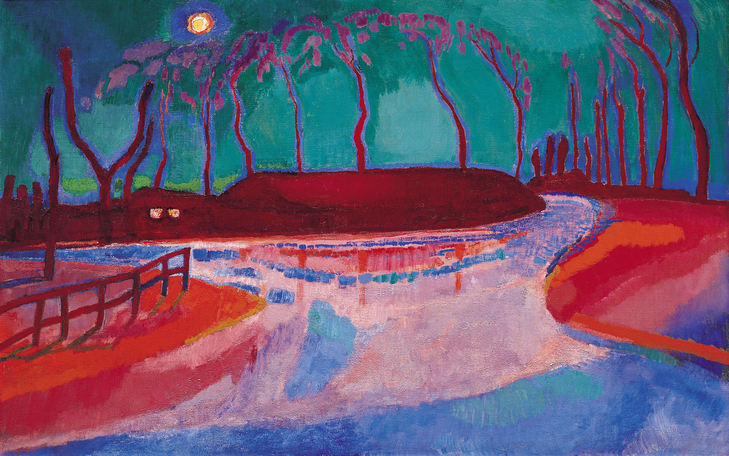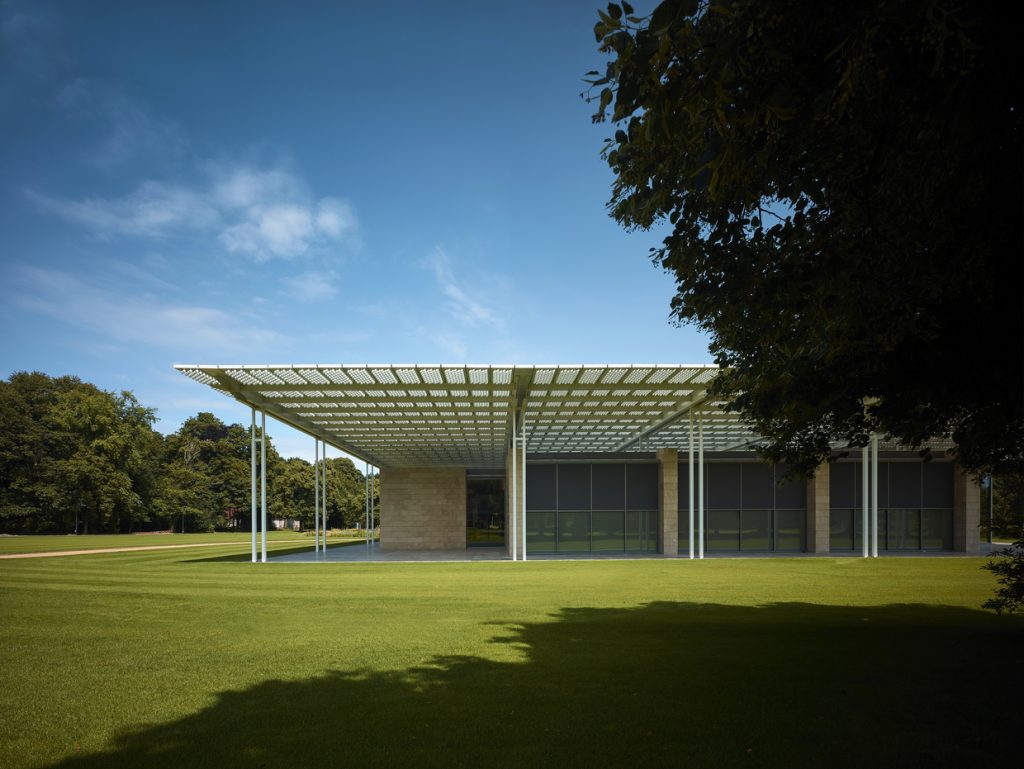For many tourists – a key attraction of a trip to Holland is a visit to one of the many Galleries or Museums, dedicated to the many renowned artists who were inspired by the scenery, people and customs of The Netherlands.
It is no surprise therefore that a new museum for modern and contemporary art will open its doors on Sunday, September 11: Museum Voorlinden. Close to the Dutch coast, set against a backdrop of lush greenery this bright white building is set to house the rich and surprising collection amassed over the last 50 years by Joop van Caldenborgh. In addition to a changing display of pieces from its own collection, Museum Voorlinden will house temporary exhibitions and a number of permanent artworks installed in situ.
Founder Joop van Caldenborgh: ‘Giving many people the opportunity to see and experience our art is a good thing. All are invited to come to the Museum and to the nature surrounding Voorlinden, to share in this new adventure. You needn’t be a connoisseur of art; all “artwatchers” are welcome.’
The building
In close cooperation with the client, Kraaijvanger Architects have designed a building whose every aspect is arranged in service to the art. The elongated footprint consists of alternating planes of stone—with the color of sand dunes—and transparent glass. The entire structure stands on a plinth made of the same stone. An elegant, white steel colonnade around the perimeter supports the ingeniously constructed roof. The dimensions and proportions are equal to those of both a football pitch and a Greek temple. Despite its modern appearance, the building contains multiple references to classical elements, including the portico in front of the entrance, the six columns (known as hexastyle) on its short side and the overall symmetry and proportion. The interior is divided into three general sections in accordance with the museum program: collection presentations, temporary exhibitions and permanently installed works. The museum is comprised of 20 galleries with high ceilings and natural light, dedicated spaces for video presentations and works on paper, an auditorium, library, educational space, conservator’s studio and museum shop.
Thanks to a series of 115,000 diagonal ducts arranged over the entire roof, the characteristic bright light of the Dutch coast is able to enter the building at an oblique angle. A roof made of transparent glass, with additional indirect LED lighting incorporated into its construction and a velum ensures that the proper amount of light illuminates the artworks, whether it’s on a sunny day or at night, as if by magic.
General Director Wim Pijbes: ‘Voorlinden is a new museum for a wide audience with a highly curated collection full of surprises!’
Full Moon
The inaugural collection presentation starts with the painting Maannacht IV (1912) by Jan Sluijters (1881-1957). This seemingly-realistic nocturne marks the starting point for a voyage of visual discovery curated by Suzanne Swarts, Artistic Director of Museum Voorlinden. Full Moon is about the pleasure of looking, of seeing, comparing and discovering. Over 40 artworks from different periods, created using varying techniques and materials, and hailing from all corners of the globe will be brought together for the first time.

Full Moon offers a non-chronological cross-section of the collection and provides an introduction to its rich and varied contents. Visitors will be invited to make their own connections and comparisons between the pieces, as well as challenged to form conclusions and opinions of their own.
Full Moon will include work by Ai Weiwei (1957), Francis Alÿs (1959), Massimo Bartolini (1962), Michaël Borremans (1963), Marcel Broodthaers (1924-1967), Enrico Castellani (1930), Susan Collis (1956), Jose Dávila (1974), Rineke Dijkstra (1959), Olafur Eliasson (1967), Haris Epaminonda (1980), Cerith Wyn Evans (1958), Hans-Peter Feldmann (1941), Tom Friedman (1965), Damien Hirst (1965), Olaf Holzapfel (1969), Robert Kinmont (1937), Yves Klein (1928-1962), Pyke Koch (1901-1991), Paul Kooiker (1964), Guillermo Kuitca (1961), Sherrie Levine (1947), René Magritte (1898-1967), Mark Manders (1968), Katja Mater (1979), Astrid Mingels (1987), François Morellet (1926-2016), Maurizio Nanucci (1939), Ornaghi&Prestinari (1986, 1984), Ugo Rondinone (1964), Turi Simeti (1929), Jan Sluijters (1881-1957), Pascale Marthine Tayou (1967), Esther Tielemans (1976), Kaari Upson (1972), Andy Warhol (1928-1987), Remy Zaugg (1943-2005) and Chen Zhen (1955-2000).
Artistic Director Suzanne Swarts: ‘Full Moon will acquaint visitors with some of the extremes in our collection. Along the way, it will facilitate fresh interaction between various artworks, and between each viewer and the art. A visit to Full Moon is truly a foray into the artists’ world.’
Ellsworth Kelly: Anthology
Ellsworth Kelly (1923-2015) was among the first artists to make the collector’s heart of Joop van Caldenborgh beat faster; he purchased the 1959 painting Blue Ripe early on. Kelly’s work unites many of the aspects most instrumental in creating Van Caldenborgh’s lifelong connection to art: clean lines and pure form, a subtle use of colour and a viewing experience that combines immediacy with sensuality. At Museum Voorlinden, the visual experience of the viewer is the primary concern. Rudi Fuchs is the curator. His exhibition, entitled Ellsworth Kelly: Anthology, is all about looking –as is Kelly’s work.
Rudi Fuchs: ‘When you let go of the idea that you have to understand a thing, you are free to look at your leisure.’
Preparations were already in full swing when the artist passed away on December 27, 2015. Now, more than ever, the exhibition is intended as an homage to Kelly’s oeuvre and to the artist himself. This will be the first Ellsworth Kelly exhibition in the Netherlands since the artist’s work was presented in the Stedelijk Museum Amsterdam in 1979. Voorlinden will be displaying pieces on loan from prominent museums and private collections in the United States, the Netherlands and from across Europe. This exhibition has been realised in close consultation with the Ellsworth Kelly Studio in Spencertown (USA).
Permanent works
Museum Voorlinden will feature a number of artworks on permanent display. Skyspace by James Turrell (1943) and the corten steel sculpture Open Ended (2007-2008) by Richard Serra (1938) have been incorporated into the building itself. Museum Voorlinden additionally boasts permanently installed work by Maurizio Cattelan (1960) and the illusionistic Swimming Pool by Argentinian artist Leandro Erlich (1973). The hyper-realistic Couple under an Umbrella by Ron Mueck (1958) and the enchanting glass sculptures of Roni Horn (1955) are on semi-permanent display as well. In order to present these works to their optimum advantage, each singular piece has been placed in a separate gallery.
Voorlinden Estate
The Voorlinden Estate has a long history, going back to Roman times. The name ‘Voorlinden’ first appeared in 1584. During the seventeenth century, various country estates were established around The Hague – Voorlinden among them. The landscape architect J.D. Zocher (1791-1870) and his son (1820-1915) created a landscape-style park here at the start of the nineteenth century. In 1912, when Voorlinden passed into the hands of baron Hugo Loudon, the new owner commissioned the construction of the present manor house, which was designed by British architect R.J. Johnston. Loudon, had the house built in the style of his English wife’s stately country manor. In the same period, landscape architect Leonard Springer (1855-1940) drafted a new design for the estate grounds which created entirely new sight lines. Springer is also responsible for the combination of European and exotic trees on the estate. For the opening of Museum Voorlinden, landscape architect Piet Oudolf (1944) was invited to design the gardens surrounding the new building. This latest addition completes a visual sampler of landscape styles from the early 19th, 20th and 21st centuries. The wooded areas, sloping meadows and dunes are open to the public and accessible via the foot paths. Dogs must be leashed in connection with the game and birds present on the estate.
For more information go here
Feature Image: Credit Pietro Savorelli

